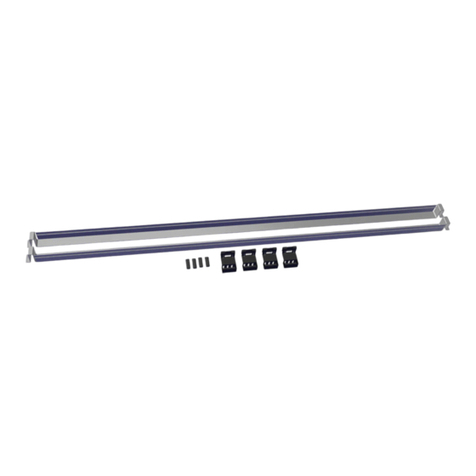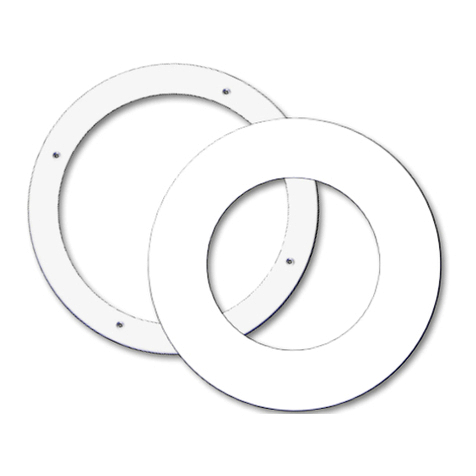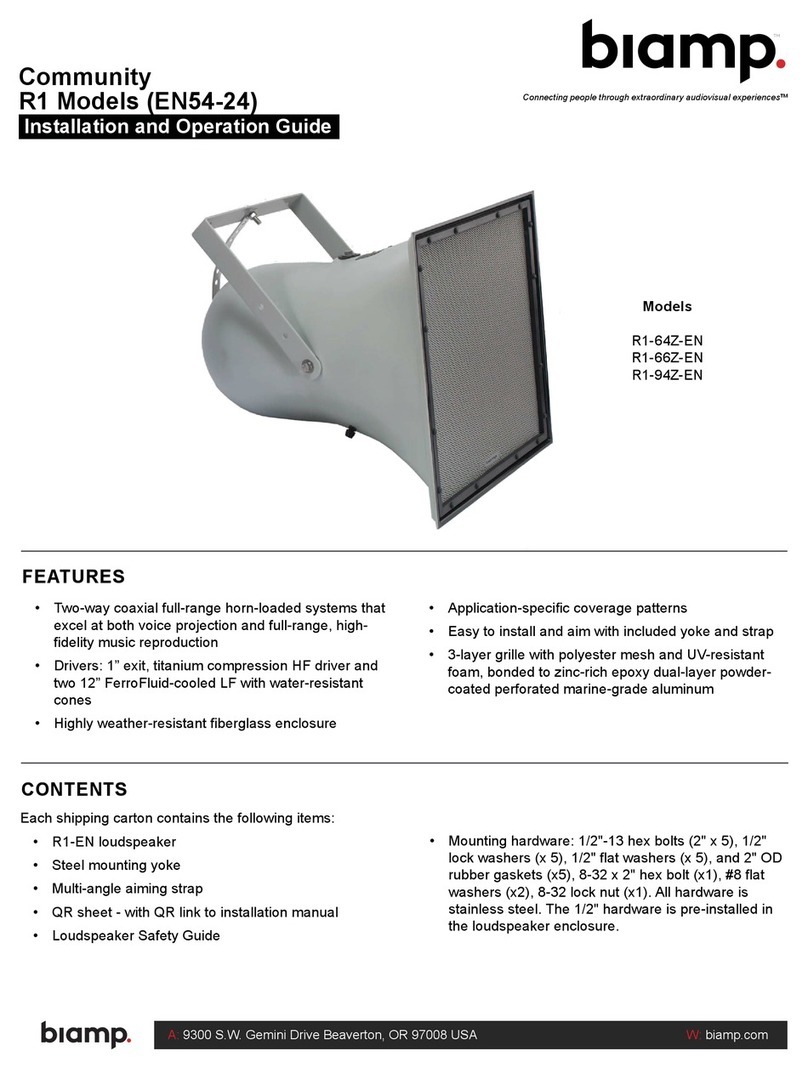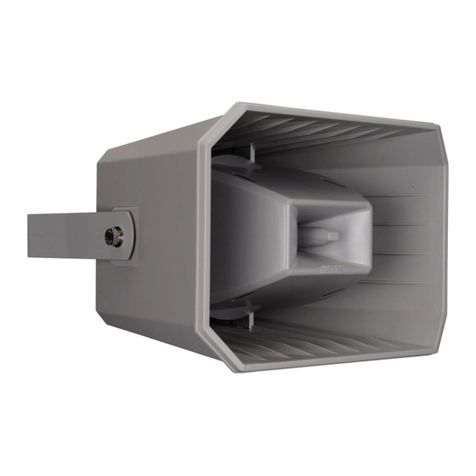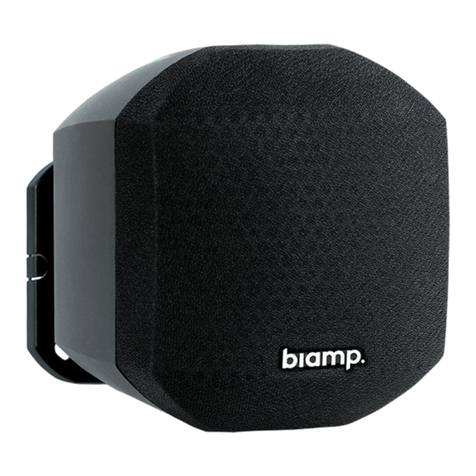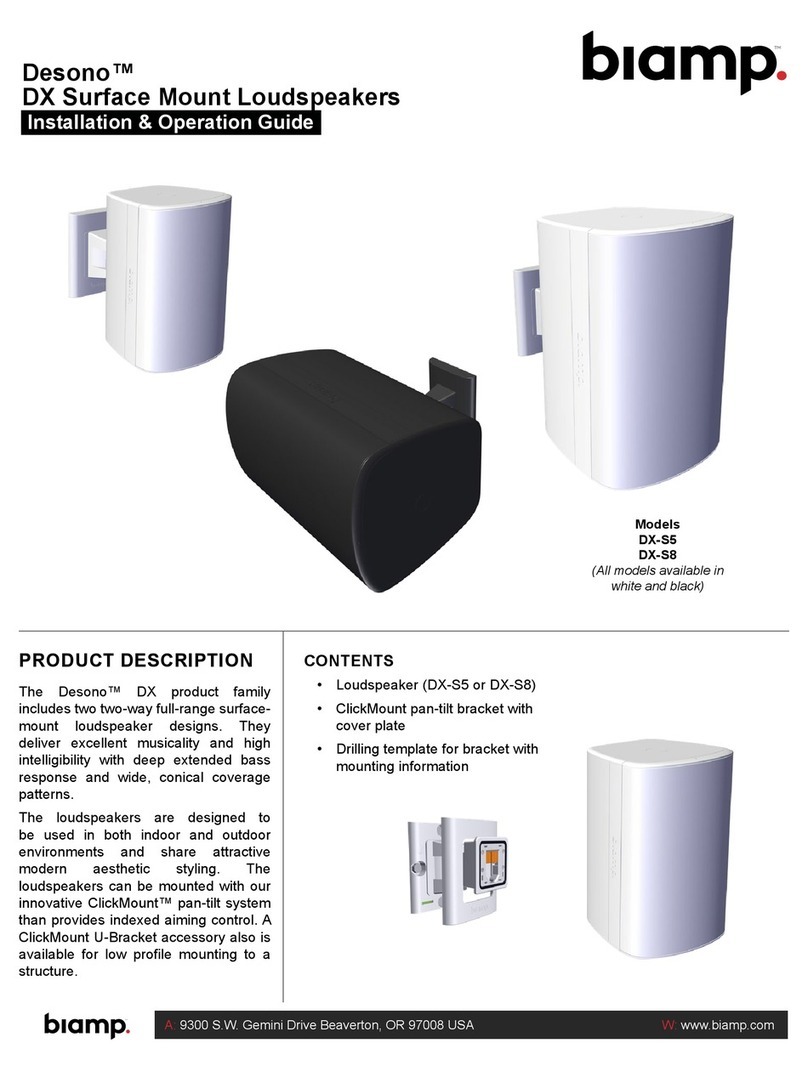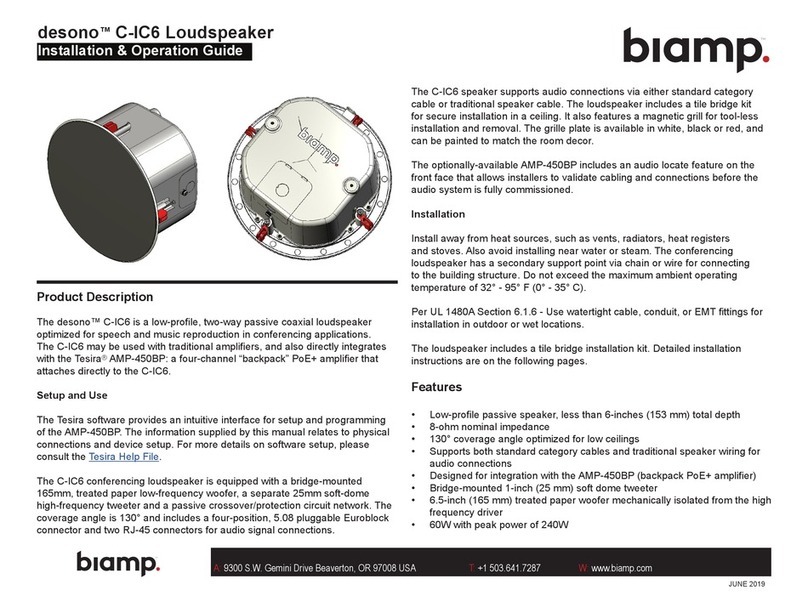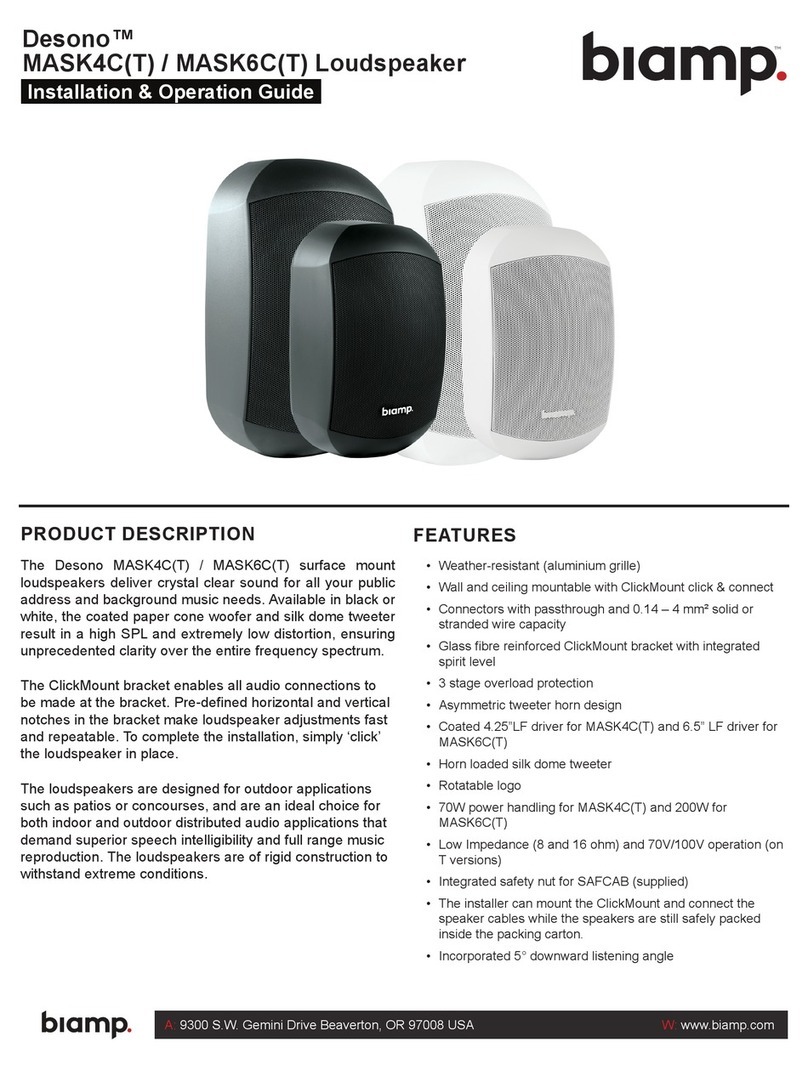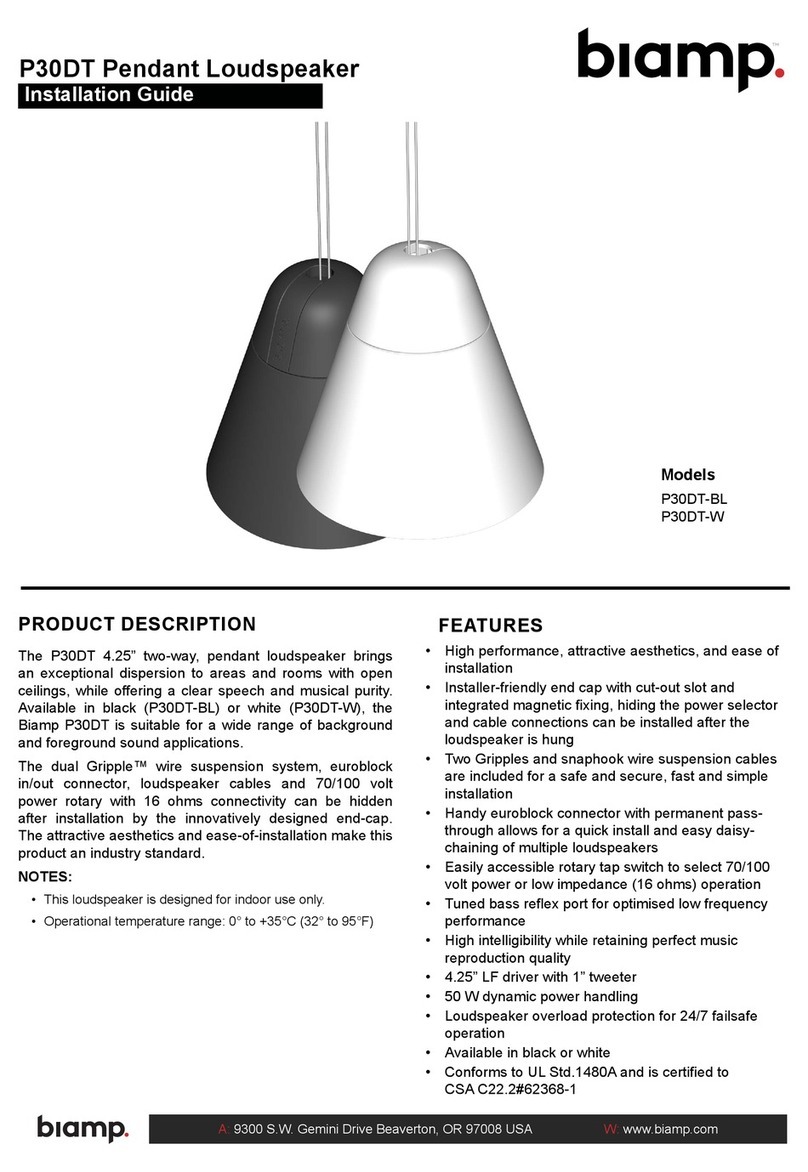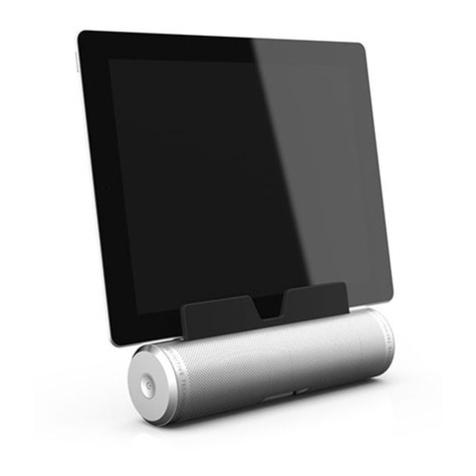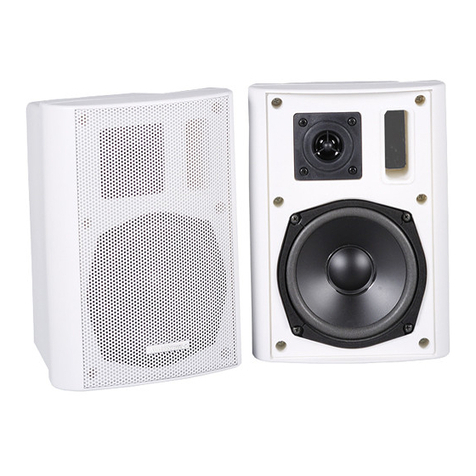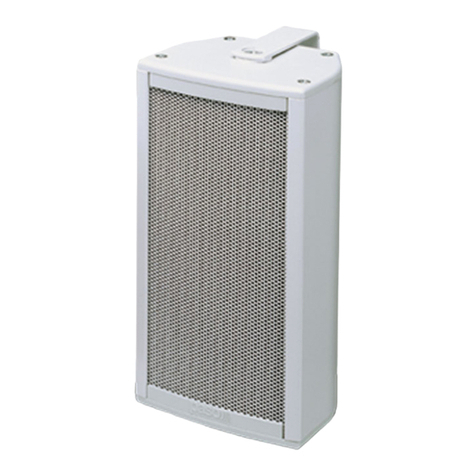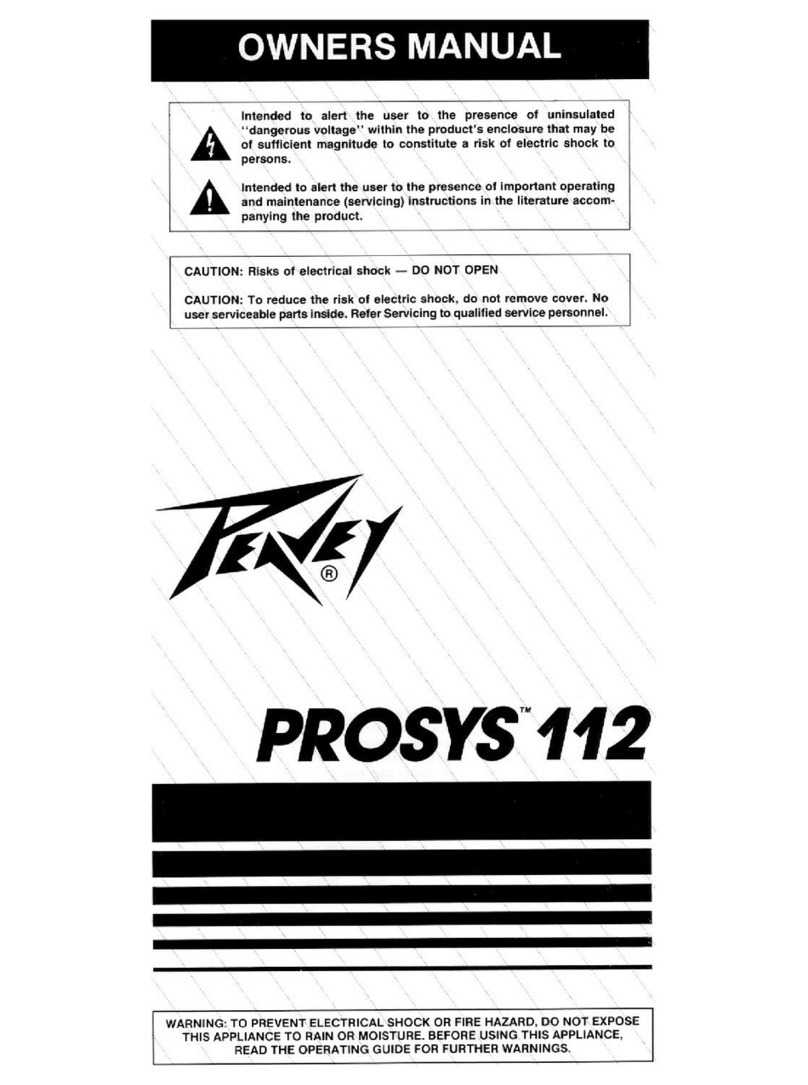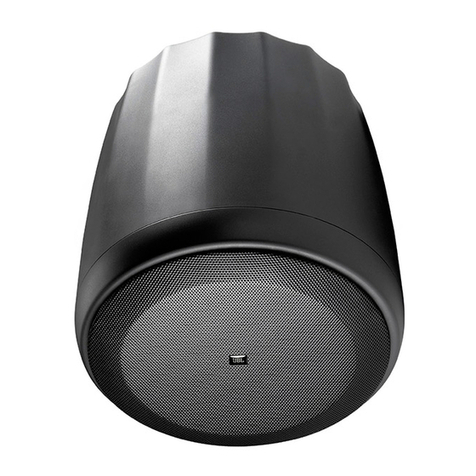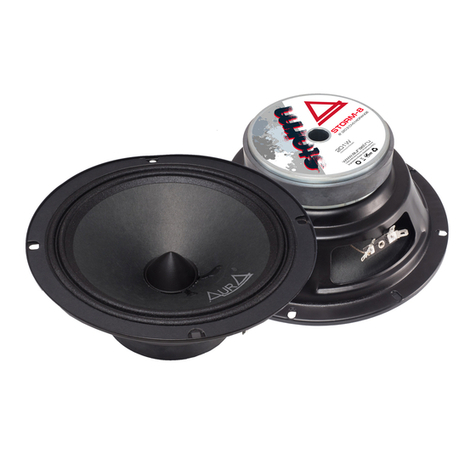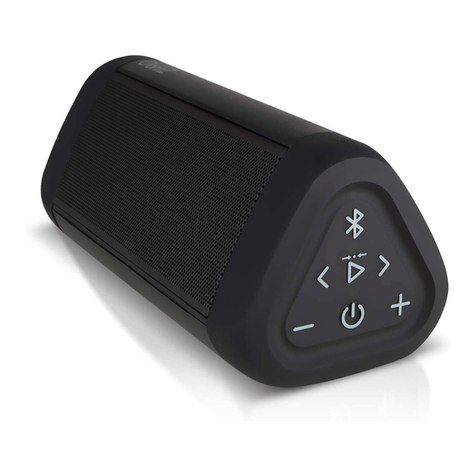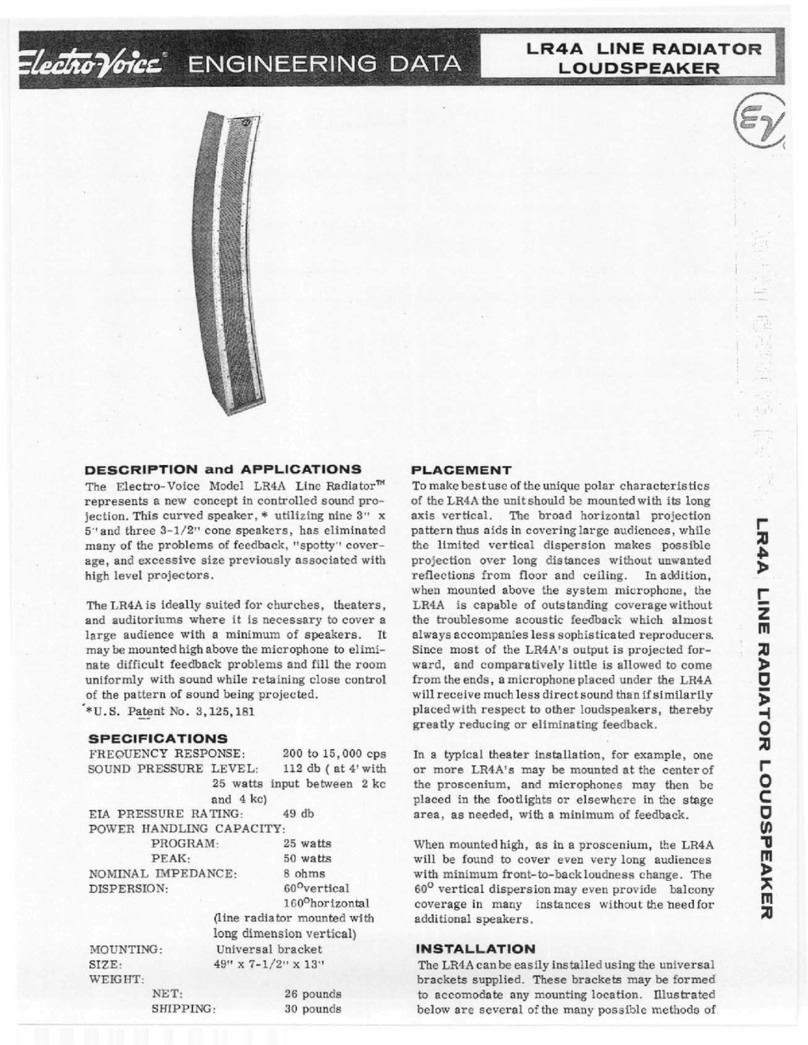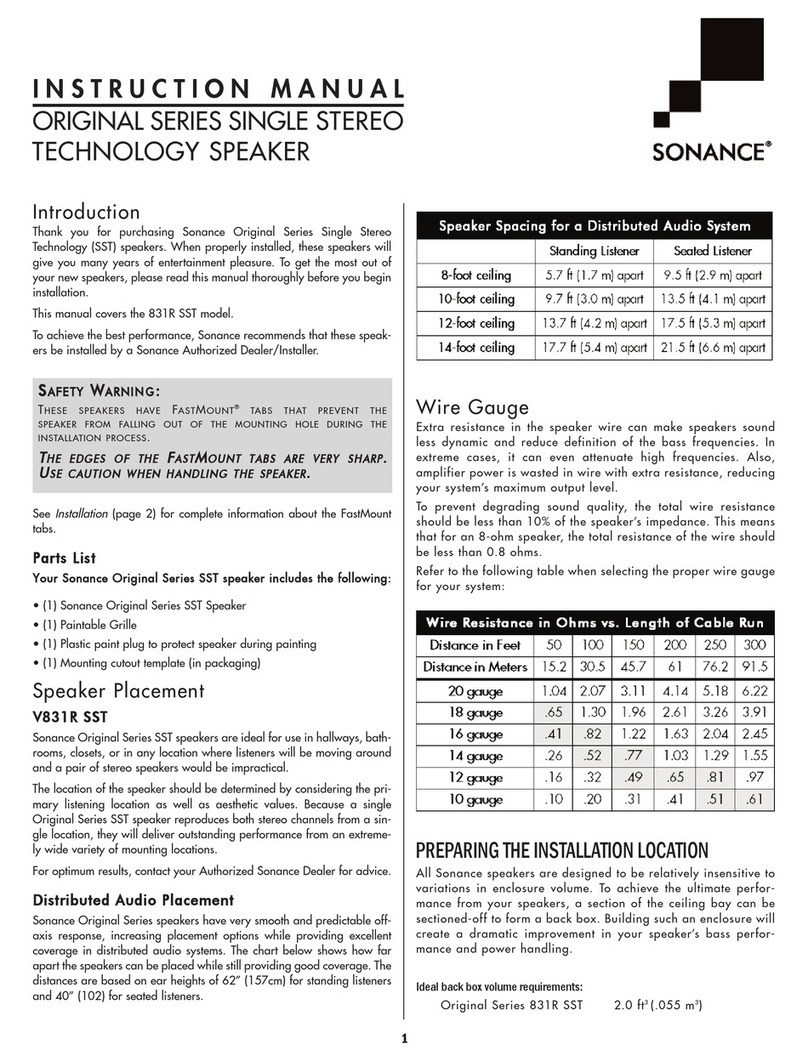
page 4 Installation and Operation Guide R2-EN
TERMINOLOGY: The terms “rigging", “ying" and
“suspension" are often used interchangeably to describe
the installation of loudspeaker systems above ground
level. None of these terms pertain to, or attempt to
describe, the actual method that is used (cables, brackets,
chains, etc.).
DANGER: The loudspeakers described in this
manual are designed and intended to be suspended
using a variety of rigging hardware, means, and
methods. It is essential that all installation work involving
the suspension of these loudspeaker products be
performed by competent, knowledgeable persons who
understand safe rigging practices. Severe injury and/or
loss of life may occur if these products are improperly
suspended.
DANGER: All rigging ttings and inserts must
remain sealed with the included hardware or they
must be tted with properly rated optional mounting
hardware. Any missing fasteners will compromise the
weather resistance of the enclosure.
BIAMP RIGGING HARDWARE WARRANTY:
Biamp warrants that its loudspeaker systems and its
optional mounting and rigging hardware have been
carefully designed and tested. Biamp loudspeakers may
be safely suspended when each loudspeaker model is
suspended with Biamp-manufactured mounting and rigging
brackets specifically designed for use with that particular
model of loudspeaker. This warranty applies only for use
under normal environmental conditions, and when all
loudspeakers, component parts, brackets and hardware are
assembled and installed in strict accordance with Biamp’s
installation guidelines contained herein. Beyond this, Biamp
assumes no further or extended responsibility or liability, in
any way or by any means whatsoever. It is the responsibility
of the installer to insure that safe installation practices are
followed, and that such practices are in accordance with
any and all local, state, federal, or other, codes, conditions,
and regulations that may apply to, or govern the practice
of, rigging, mounting, and construction work in the relevant
geographic territory. Any modifications made to any parts
or materials manufactured or supplied by Biamp shall
immediately void all pledges of warranty or surety, related
in any way to the safe use of those parts and materials.
WARNING NON-Biamp RIGGING HARDWARE:
Non-Biamp hardware used for rigging an R SERIES
loudspeaker must be certied by the supplier for
such use and must be properly rated for safety.
Correct
Yoke tight against
rubber washer and
enclosure
NOT Correct
Bracket spaced away
from enclosure
Enclosure
Yoke
Figure 1. Mounting point load
Custom
Bracket
IMPORTANT NOTES ON RIGGING LOUDSPEAKERS
There are three (3) areas of responsibility for rigging
loudspeakers.
• The building structure: Always consult with the building
architect or structural engineer to assure the ability of
the structure to support the loudspeaker system.
• The loudspeaker itself: Biamp certies its loudspeaker
systems and rigging accessories for suspension when
they are properly installed according to our published
guidelines.
• Everything between the loudspeaker and the building
structure and the process of installation: The installing
contractor assumes this responsibility. Loudspeaker
rigging should be performed only by certied rigging
professionals using certied rigging hardware chosen
for the specic application. Prior to installation, the
contractor should present a rigging plan, with drawing
and detailed parts list, to a licensed structural engineer
(P.E.) or architect for written approval.
WARNING: R SERIES rigging ttings are rated at
the Working Load Limits (WLL) listed on page 3. No
single rigging tting should ever be subjected to a
load that is greater than the stated load. Failure to heed
this warning could result in injury or death!
Acceptable Mounting Point Loading
The mounting points should always be used so that either
shear force is applied perpendicular to the direction of and
in tight proximity to the mounting hole, or tension force
is applied perpendicular to the enclosure surface. See
Figure 1 below.
DANGER: Use the mounting points only as
described above. Do not use them in such a way as
to apply sideways leverage to them. Failure to
follow this instruction could result in immediate failure of
the mounting points resulting in damage to the
loudspeaker and serious injury or death to personnel.
RIGGING / SUSPENSION AND SAFETY

